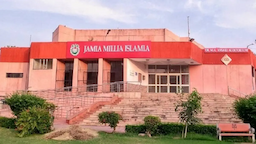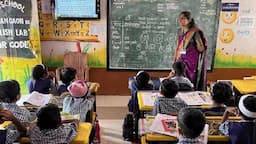The education of mothers of school-age children in rural India has changed significantly over the last eight years, according to the Annual Status of Education Report (ASER) 2024, published last month.
Government officials report that the percentage of mothers (of children aged 5 to 16) who have never attended school has decreased from 46.6% in 2016 to 29.4% in 2024.

This change is attributed to the Sarva Shiksha Abhiyan (now Samagra Shiksha), which was launched in 2001–02 with the goal of achieving universal enrollment.
However, the data shows that the shift goes beyond just more mothers attending school; it also highlights a rise in the level of education they are pursuing.
In 2016, only 9.2% of mothers had completed more than class 10. In the past eight years, this number has increased by 10 percentage points, reaching 19.5% in 2024.
Kerala has not only seen the largest increase in this figure over the last eight years, but it has also fared the best in terms of mothers' educational achievements. In 2016, 40% of mothers had completed more than class 10, and by 2024, this figure rose by 29 percentage points to 69.6%.
Kerala has had the highest percentage of mothers with more than a class 10 education in both 2016 and 2024.
Himachal Pradesh followed, with a rise of around 22 percentage points over the last eight years, from 30.7% in 2016 to 52.4% in 2024.
Other states, including Haryana, Andhra Pradesh, Karnataka, Maharashtra, Tamil Nadu, Telangana, Uttar Pradesh, Uttarakhand, and West Bengal, all saw increases of more than 10 percentage points in the proportion of mothers with education beyond class 10.
Madhya Pradesh ranked the lowest, with only 9.7% of mothers having completed more than class 10 in 2024, compared to 3.6% in 2016.
The percentage of fathers with education beyond class 10 has also increased, but by a smaller margin—up by 8 percentage points, from 17.4% in 2016 to 25% in 2024.
Over the last eight years, the gap between the percentage of mothers and fathers who have completed more than class 10 has narrowed. In 2016, fathers were 8% more likely than mothers to have completed education beyond class 10. By 2024, this difference has reduced to nearly 5%.
In approximately 600 rural districts across the country, around 649,000 children participated in evaluations of basic reading and math skills as part of the NGO Pratham's nationwide rural household survey, ASER. Along with examining enrollment and learning levels, ASER also collects data on the number of years each child's mother and father have attended school.
Pratham CEO Rukmini Banerji noted that the increase in maternal education is consistent with the rise in general enrollment over time.
“These are mothers of children in the 5-16 age group. The mothers who are more educated are likely to be mothers of younger children. If a child is 5 and the mother is 20, the mother would have attended school around the time when elementary education was universalized, and enrollment levels were high,” she said.
A senior official from the Education Ministry also emphasized that young mothers today would have attended school during a time when enrollment and access to education were expanding. The Sarva Shiksha Abhiyan (now Samagra Shiksha) was launched in 2001–02 with the aim of universal elementary education.
“This is very significant. It is well known from a great deal of research that a mother’s education has positive effects on her children,” Banerji added.

Studies show that maternal literacy has a positive impact on children's educational outcomes and academic performance.
In a 2017 study titled "The Impact of Maternal Literacy and Participation Programs: Evidence from a Randomized Evaluation in India," Banerji, James Berry, and Marc Shotland demonstrated how interventions like language and math classes for mothers, as well as training them to support their child’s learning at home, resulted in improved math learning outcomes for children.
Madhav Chavan, president and board member of the Pratham Education Foundation, wrote in the ASER 2024 report, “It is also important to note that the proportion of schooled mothers has been growing significantly. These mothers are a major demand driver for education. The national policy and mass-scale efforts by civil society for stronger early years education have been successful in meeting the demands of the people, especially the increasingly educated mothers.”










-1920x1080.jpg&w=256&q=75)





